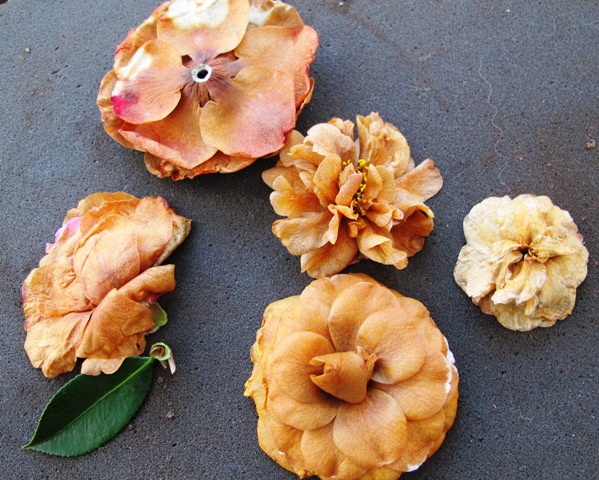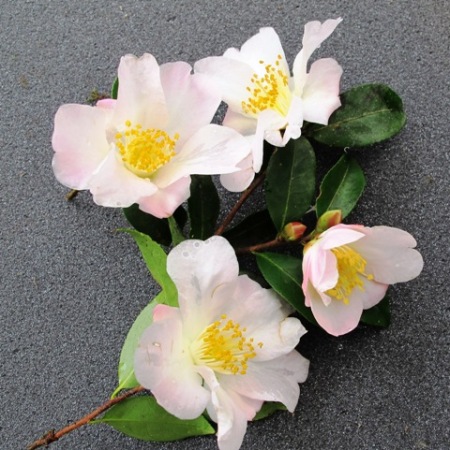
We used to take perfection in camellia blooms for granted
Why did this camellia make me so sad that I picked it to photograph it? It is just a pretty, formal japonica-type that is an unnamed seedling, known here as ‘Mimosa’s sister’ because it is of the same breeding that produced the beautiful pink formal that Felix Jury liked so much he named it for his wife, Mimosa Jury. The answer is because it is a rare sight, now – a perfect, undamaged bloom.
When we set up the nursery in the early 1980s, rhododendrons and camellias were our main lines. The former have fallen from favour these days, the latter have been decimated by camellia petal blight. Mark’s dad, Felix, loved the formal flower shape so much that most he named were of this form – ‘Waterlily’, ‘Dreamboat’, ‘Softly’, ‘Julie Felix’ and ‘Mimosa Jury’. The first two are international classics now and ‘Mimosa Jury’ deserves to be there, too.

These days, this is a more common sight – blooms showing various stages of unsightly damage
We still have many camellias in our garden, both of Jury breeding and named cultivars from around the world. Right now should be peak display for the japonicas, hybrids and reticulatas but camellia petal blight has dealt a death blow to that. It is maybe two decades since we have had a good early spring display and we will never see it again from that grouping of mass bloomers. It really is a bit sad to lose a major family of flowers. We keep the plants we want for shelter, overhead cover and as background filler plants but now without the pleasure of a clean floral display.

Sadly, even the interesting tropical yellow species like Camellia nitidissima suffer from petal blight in our conditions

More of botanical interest than rewarding garden plant – Camellia nitidissima again
Camellia petal blight is a problem throughout much of the world. Australia hasn’t got it and long may their border control keep it out. As I commented after attending the International Camellia Congress in China, it is not as devastating in other areas as ours. It is nowhere near as bad in dry climates. But here, with our generally mild climate, high rainfall and high humidity all year round, it is as bad as it can be. I doubt that we will plant another japonica or reticulata in our gardening lifetime. Were we still selling plants, we would have contracted our range to sasanquas, the garden-worthy species and some of the tiny flowered cultivars that don’t show a problem with petal blight because each individual flower only lasts a few days.
There is work going on to try and breed for blight-resistant choices but they are limited to tiny flowered cultivars as far as I have seen. I do not think we will ever see the japonicas and reticulatas free of blight. The progress on trying to find a treatment for petal blight is painfully slow and if it comes about, it may be suitable for treating individual specimen plants but not for the mass plantings that New Zealand went for in the past.
At the time it was discovered, it was only in four places in Wellington and could have been eradicated but it wasn’t seen a priority, either high or low. So it spread – everywhere. The theory back then was that it may have come in on a corsage being worn by an airline passenger from the west coast of USA where it was already well established. From such minor events can a major change be brought about.

Most of our camellias look more like this now – hanging on to blighted blooms
I just feel a bit sad that I won’t see the mass display of beautiful blooms that we took for granted for so long. If you live in a drier climate, they are probably still a viable option. Look around and see if the garden plants in your area are putting on a clean display and dropping their spent blooms (blighted blooms usually stay hanging on the bush). If, like here, there are no mass displays of blooms any longer, I would be looking at planting other options than the larger flowered camellia types. When you come from the camellia family of Jury, that is bleak advice.
Ever the Pollyanna, I should finish on a positive note. Fortunately there are plenty of other beautiful flowering plants we can choose from for this time of year. Look at the range of colours Mark is getting to in his breeding work on garden-friendly michelia shrubs. Most of these are also blessed with good fragrance which is not common in camellias. 


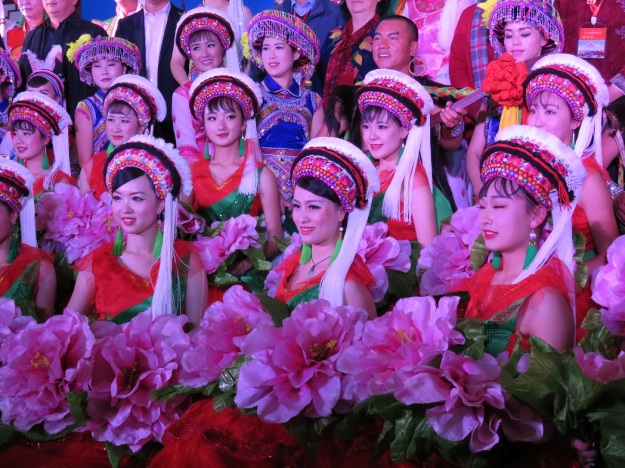
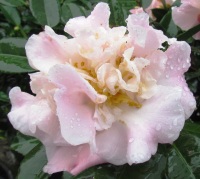



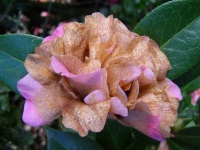
 First published in the June issue of NZ Gardener and reprinted here with their permission.
First published in the June issue of NZ Gardener and reprinted here with their permission. 







